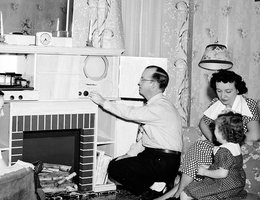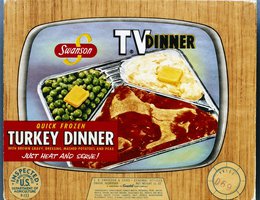


Television, more than anything else, changed the way Nebraskans viewed the world and spent their free time. As more and more television sets were purchased, the entire country could watch the same event or entertainment show. As a result, different parts of the country became more like the whole country and cultural differences were diminished.
Television came to Nebraska in 1949 when Omaha by stations WOW-TV and KMTV began broadcasting. At that time, there were only 2,500 TV sets in homes in Omaha to watch their programming. That changed quickly as families rushed out to buy sets. To meet the demand for programs, stations in Lincoln, Hastings, Lexington, Scottsbluff and other communities were built quickly. By the mid-1950s eight stations, both in Nebraska and out-of-state, served Nebraska viewers.
There are still many folks alive who remember getting their first TV set. The picture was black-and-white only. In much of the state, you might have only one station to choose from — nowhere near the dozens of cable or satellite channels available now.
What these early stations showed was most often live programming produced in the local studios. There was a lot of time to fill, and so the stations produced interview shows, kids shows, cooking shows, exercise shows, farm and gardening programs, wrestling matches, news reports and musical variety shows. For instance, former Late Show host, Johnny Carson, got his start as a television comedian and talk show host in Omaha. KOLN-TV in Lincoln offered the Mary and Mr. Bill Show for local kids, followed in later years by Calamity Kate. One of the highlights of a kid’s year might be to get his or her birthday party guests on camera at one of the local kid’s shows. Eventually, the networks began providing more and more national programming and local shows were cut back. Now, nightly news programs are the only local programming offered by many stations.
Despite limited programming and channels, Nebraskans found the new "box" compelling — so compelling that many families began eating around the TV set. A Nebraska company noticed this fact and produced one of the most famous contributions to Atomic Age cuisine — the TV dinner. Developed at Swanson Foods in Omaha, it promised "just what the housewives want — no work, no thawing." The original 1954 package label actually looked like a television set. The first year only 5,000 turkey dinners were produced, but by 1955 the number had ballooned to 25 million.